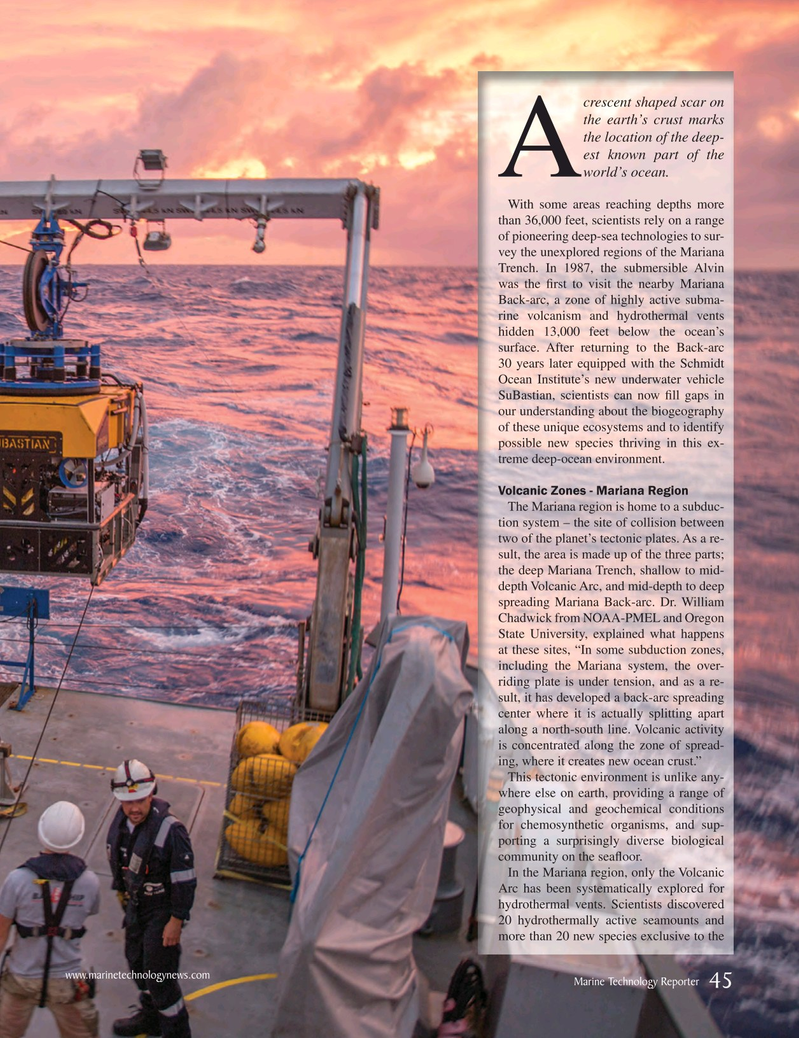
Page 45: of Marine Technology Magazine (March 2017)
Oceanographic Instrumentation: Measurement, Process & Analysis
Read this page in Pdf, Flash or Html5 edition of March 2017 Marine Technology Magazine
crescent shaped scar on the earth’s crust marks the location of the deep- est known part of the
A world’s ocean.
With some areas reaching depths more than 36,000 feet, scientists rely on a range of pioneering deep-sea technologies to sur- vey the unexplored regions of the Mariana
Trench. In 1987, the submersible Alvin was the ? rst to visit the nearby Mariana
Back-arc, a zone of highly active subma- rine volcanism and hydrothermal vents hidden 13,000 feet below the ocean’s surface. After returning to the Back-arc 30 years later equipped with the Schmidt
Ocean Institute’s new underwater vehicle
SuBastian, scientists can now ? ll gaps in our understanding about the biogeography of these unique ecosystems and to identify possible new species thriving in this ex- treme deep-ocean environment.
Volcanic Zones - Mariana Region
The Mariana region is home to a subduc- tion system – the site of collision between two of the planet’s tectonic plates. As a re- sult, the area is made up of the three parts; the deep Mariana Trench, shallow to mid- depth Volcanic Arc, and mid-depth to deep spreading Mariana Back-arc. Dr. William
Chadwick from NOAA-PMEL and Oregon
State University, explained what happens at these sites, “In some subduction zones, including the Mariana system, the over- riding plate is under tension, and as a re- sult, it has developed a back-arc spreading center where it is actually splitting apart along a north-south line. Volcanic activity is concentrated along the zone of spread- ing, where it creates new ocean crust.”
This tectonic environment is unlike any- where else on earth, providing a range of geophysical and geochemical conditions for chemosynthetic organisms, and sup- porting a surprisingly diverse biological community on the sea? oor.
In the Mariana region, only the Volcanic
Arc has been systematically explored for hydrothermal vents. Scientists discovered 20 hydrothermally active seamounts and more than 20 new species exclusive to the www.marinetechnologynews.com
Marine Technology Reporter 45
MTR #2 (34-49).indd 45 MTR #2 (34-49).indd 45 3/1/2017 9:59:43 AM3/1/2017 9:59:43 AM

 44
44

 46
46
